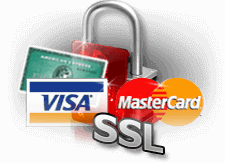BUG RAPOR ve ÖDÜL PROGRAMI
Bu site ve bize ait sistemlerimizde henüz bulamadığımız hataları tespit etmek istiyoruz ve bunu yapmak için sizin yardımınıza ihtiyacımız var. Sistemlerimizde bulacağınız açıklar için aşağıda belirtilen bug ve kurallar kapsamızda sizi öödüllendiriyoruz.
Bug Seviyeleri ve Ödülleri
P1 - 5000-12000 TL
P2 - 2000-5000 TL
P3 - 600-2000 TL
P4 - 200 - 600 TL
P5 - 0 - 200 TL
P0 - 0 TL - Ödeme yapamasak da sizi güvenlik sitelerinde ve sosyal medya sayfamızda yorum yaparak övüyoruz, tavsiye ediyoruz.
+ Ayrıca tüm bug gönderenleri bu sayfada(altta) yayınlayarak bize desteği için teşekkür ediyoruz.
TÜM RAPORLANABİLİR BUG TÜRLERİ VE SEVİYELERİ
P0 - Unsafe Cross-Origin Resource Sharing (Server Security Misconfiguration)
P0 - Path Traversal (Server Security Misconfiguration)
P0 - Sensitive Data Exposure (Server Security Misconfiguration -> Directory Listing Enabled)
P0 - SSL Attack (BREACH, POODLE etc.) (Server Security Misconfiguration)
P0 - Missing/Broken State Parameter (Server Security Misconfiguration -> OAuth Misconfiguration)
P0 - Insecure Redirect URI (Server Security Misconfiguration -> OAuth Misconfiguration)
P0 - Privilege Escalation (Broken Authentication and Session Management)
P0 - Cross Site Script Inclusion (XSSI) (Sensitive Data Exposure)
P0 - Insecure Direct Object References (IDOR) (Broken Access Control (BAC))
P0 - Exposed Sensitive Android Intent (Broken Access Control (BAC))
P0 - Exposed Sensitive iOS URL Scheme (Broken Access Control (BAC))
P0 - Authenticated Action (Cross-Site Request Forgery (CSRF) -> Action-Specific)
P0 - Unauthenticated Action (Cross-Site Request Forgery (CSRF) -> Action-Specific)
P0 - Cleartext Transmission of Sensitive Data (Insecure Data Transport)
P1 - Using Default Credentials (Server Security Misconfiguration)
P1 - Local (Server-Side Injection -> File Inclusion)
P1 - Remote Code Execution (RCE) (Server-Side Injection)
P1 - SQL Injection (Server-Side Injection)
P1 - XML External Entity Injection (XXE) (Server-Side Injection)
P1 - Authentication Bypass (Broken Authentication and Session Management)
P1 - Password Disclosure (Sensitive Data Exposure -> Critically Sensitive Data)
P1 - Private API Keys (Sensitive Data Exposure -> Critically Sensitive Data)
P1 - Command Injection (Insecure OS/Firmware)
P1 - Privileged User (Insecure OS/Firmware -> Hardcoded Password)
P1 - Incorrect Usage (Broken Cryptography -> Cryptographic Flaw)
P1 - PII Leakage (Automotive Security Misconfiguration -> Infotainment)
P1 - Key Fob Cloning (Automotive Security Misconfiguration -> RF Hub)
P2 - High Impact Subdomain Takeover (Server Security Misconfiguration -> Misconfigured DNS)
P2 - Account Takeover (Server Security Misconfiguration -> OAuth Misconfiguration)
P2 - Token Leakage via Host Header Poisoning (Sensitive Data Exposure -> Weak Password Reset Implementation)
P2 - Non-Privileged User to Anyone (Cross-Site Scripting (XSS) -> Stored)
P2 - Internal High Impact (Broken Access Control (BAC) -> Server-Side Request Forgery (SSRF))
P2 - Application-Wide (Cross-Site Request Forgery (CSRF))
P2 - Critical Impact and/or Easy Difficulty (Application-Level Denial-of-Service (DoS))
P2 - Non-Privileged User (Insecure OS/Firmware -> Hardcoded Password)
P2 - Code Execution (CAN Bus Pivot) (Automotive Security Misconfiguration -> Infotainment)
P2 - CAN Injection / Interaction (Automotive Security Misconfiguration -> RF Hub)
P3 - Basic Subdomain Takeover (Server Security Misconfiguration -> Misconfigured DNS)
P3 - No Spoofing Protection on Email Domain (Server Security Misconfiguration -> Mail Server Misconfiguration)
P3 - Response Splitting (CRLF) (Server-Side Injection -> HTTP Response Manipulation)
P3 - iframe Injection (Server-Side Injection -> Content Spoofing)
P3 - Second Factor Authentication (2FA) Bypass (Broken Authentication and Session Management)
P3 - HTTPS not Available or HTTP by Default (Broken Authentication and Session Management -> Weak Login Function)
P3 - Remote Attack Vector (Broken Authentication and Session Management -> Session Fixation)
P3 - Automatic User Enumeration (Sensitive Data Exposure -> EXIF Geolocation Data Not Stripped From Uploaded Images)
P3 - Privileged User to Privilege Elevation (Cross-Site Scripting (XSS) -> Stored)
P3 - CSRF/URL-Based (Cross-Site Scripting (XSS) -> Stored)
P3 - Non-Self (Cross-Site Scripting (XSS) -> Reflected)
P3 - Internal Scan and/or Medium Impact (Broken Access Control (BAC) -> Server-Side Request Forgery (SSRF))
P3 - High Impact and/or Medium Difficulty (Application-Level Denial-of-Service (DoS))
P3 - Default Folder Privilege Escalation (Client-Side Injection -> Binary Planting)
P3 - Code Execution (No CAN Bus Pivot) (Automotive Security Misconfiguration -> Infotainment)
P3 - Unauthorized Access to Services (API / Endpoints) (Automotive Security Misconfiguration -> Infotainment)
P3 - Data Leakage / Pull Encryption Mechanism (Automotive Security Misconfiguration -> RF Hub)
P4 - Zone Transfer (Server Security Misconfiguration -> Misconfigured DNS)
P4 - Email Spoofing to Inbox due to Missing or Misconfigured DMARC on Email Domain (Server Security Misconfiguration -> Mail Server Misconfiguration)
P4 - Excessively Privileged User / DBA (Server Security Misconfiguration -> Database Management System (DBMS) Misconfiguration)
P4 - Delete Account (Server Security Misconfiguration -> Lack of Password Confirmation)
P4 - Registration (Server Security Misconfiguration -> No Rate Limiting on Form)
P4 - Login (Server Security Misconfiguration -> No Rate Limiting on Form)
P4 - Email-Triggering (Server Security Misconfiguration -> No Rate Limiting on Form)
P4 - SMS-Triggering (Server Security Misconfiguration -> No Rate Limiting on Form)
P4 - Session Token (Server Security Misconfiguration -> Missing Secure or HTTPOnly Cookie Flag)
P4 - Sensitive Click-Based Action (Server Security Misconfiguration -> Clickjacking)
P4 - Implementation Vulnerability (Server Security Misconfiguration -> CAPTCHA)
P4 - Cache-Control for a Sensitive Page (Server Security Misconfiguration -> Lack of Security Headers)
P4 - Direct Server Access (Server Security Misconfiguration -> Web Application Firewall (WAF) Bypass)
P4 - External Authentication Injection (Server-Side Injection -> Content Spoofing)
P4 - Email HTML Injection (Server-Side Injection -> Content Spoofing)
P4 - Cleartext Transmission of Session Token (Broken Authentication and Session Management)
P4 - Other Plaintext Protocol with no Secure Alternative (Broken Authentication and Session Management -> Weak Login Function)
P4 - LAN Only (Broken Authentication and Session Management -> Weak Login Function)
P4 - HTTP and HTTPS Available (Broken Authentication and Session Management -> Weak Login Function)
P4 - On Logout (Client and Server-Side) (Broken Authentication and Session Management -> Failure to Invalidate Session)
P4 - On Password Reset and/or Change (Broken Authentication and Session Management -> Failure to Invalidate Session)
P4 - Over HTTP (Broken Authentication and Session Management -> Weak Registration Implementation)
P4 - Manual User Enumeration (Sensitive Data Exposure -> EXIF Geolocation Data Not Stripped From Uploaded Images)
P4 - Detailed Server Configuration (Sensitive Data Exposure -> Visible Detailed Error/Debug Page)
P4 - Untrusted 3rd Party (Sensitive Data Exposure -> Token Leakage via Referer)
P4 - Over HTTP (Sensitive Data Exposure -> Token Leakage via Referer)
P4 - User Facing (Sensitive Data Exposure -> Sensitive Token in URL)
P4 - Password Reset Token Sent Over HTTP (Sensitive Data Exposure -> Weak Password Reset Implementation)
P4 - Privileged User to No Privilege Elevation (Cross-Site Scripting (XSS) -> Stored)
P4 - Flash-Based (Cross-Site Scripting (XSS))
P4 - IE11 (Cross-Site Scripting (XSS) -> IE-Only)
P4 - Referer (Cross-Site Scripting (XSS))
P4 - Universal (UXSS) (Cross-Site Scripting (XSS))
P4 - Data URI (Cross-Site Scripting (XSS) -> Off-Domain)
P4 - External (Broken Access Control (BAC) -> Server-Side Request Forgery (SSRF))
P4 - Non-Brute Force (Broken Access Control (BAC) -> Username/Email Enumeration)
P4 - GET-Based (Unvalidated Redirects and Forwards -> Open Redirect)
P4 - No Password Policy (Insufficient Security Configurability)
P4 - Token is Not Invalidated After Use (Insufficient Security Configurability -> Weak Password Reset Implementation)
P4 - 2FA Secret Cannot be Rotated (Insufficient Security Configurability -> Weak 2FA Implementation)
P4 - 2FA Secret Remains Obtainable After 2FA is Enabled (Insufficient Security Configurability -> Weak 2FA Implementation)
P4 - Rosetta Flash (Using Components with Known Vulnerabilities)
P4 - On External Storage (Insecure Data Storage -> Sensitive Application Data Stored Unencrypted)
P4 - Plaintext (Insecure Data Storage -> Server-Side Credentials Storage)
P4 - No Secure Integrity Check (Insecure Data Transport -> Executable Download)
P4 - WiFi SSID+Password (Privacy Concerns -> Unnecessary Data Collection)
P4 - On Sensitive Content (Mobile Security Misconfiguration -> Clipboard Enabled)
P4 - Source Code Dump (Automotive Security Misconfiguration -> Infotainment)
P4 - Denial of Service (DoS / Brick) (Automotive Security Misconfiguration -> Infotainment)
P4 - Default Credentials (Automotive Security Misconfiguration -> Infotainment)
P4 - Unauthorized Access / Turn On (Automotive Security Misconfiguration -> RF Hub)
P4 - Injection (Disallowed Messages) (Automotive Security Misconfiguration -> CAN)
P4 - Injection (DoS) (Automotive Security Misconfiguration -> CAN)
P5 - Non-Sensitive Data Exposure (Server Security Misconfiguration -> Directory Listing Enabled)
P5 - Same-Site Scripting (Server Security Misconfiguration)
P5 - Missing Certification Authority Authorization (CAA) Record (Server Security Misconfiguration -> Misconfigured DNS)
P5 - Email Spoofing to Spam Folder (Server Security Misconfiguration -> Mail Server Misconfiguration)
P5 - Missing or Misconfigured SPF and/or DKIM (Server Security Misconfiguration -> Mail Server Misconfiguration)
P5 - Email Spoofing on non-email domain (Server Security Misconfiguration -> Mail Server Misconfiguration)
P5 - Change Email Address (Server Security Misconfiguration -> Lack of Password Confirmation)
P5 - Change Password (Server Security Misconfiguration -> Lack of Password Confirmation)
P5 - Manage 2FA (Server Security Misconfiguration -> Lack of Password Confirmation)
P5 - No Antivirus (Server Security Misconfiguration -> Unsafe File Upload)
P5 - No Size Limit (Server Security Misconfiguration -> Unsafe File Upload)
P5 - File Extension Filter Bypass (Server Security Misconfiguration -> Unsafe File Upload)
P5 - Cookie Scoped to Parent Domain (Server Security Misconfiguration)
P5 - Non-Session Cookie (Server Security Misconfiguration -> Missing Secure or HTTPOnly Cookie Flag)
P5 - Form Input (Server Security Misconfiguration -> Clickjacking)
P5 - Non-Sensitive Action (Server Security Misconfiguration -> Clickjacking)
P5 - Brute Force (Server Security Misconfiguration -> CAPTCHA)
P5 - Missing (Server Security Misconfiguration -> CAPTCHA)
P5 - To Internet (Server Security Misconfiguration -> Exposed Admin Portal)
P5 - Missing DNSSEC (Server Security Misconfiguration)
P5 - Fingerprinting/Banner Disclosure (Server Security Misconfiguration)
P5 - Brute Force (Server Security Misconfiguration -> Username/Email Enumeration)
P5 - OPTIONS (Server Security Misconfiguration -> Potentially Unsafe HTTP Method Enabled)
P5 - TRACE (Server Security Misconfiguration -> Potentially Unsafe HTTP Method Enabled)
P5 - Lack of Forward Secrecy (Server Security Misconfiguration -> Insecure SSL)
P5 - Insecure Cipher Suite (Server Security Misconfiguration -> Insecure SSL)
P5 - Certificate Error (Server Security Misconfiguration -> Insecure SSL)
P5 - Reflected File Download (RFD) (Server Security Misconfiguration)
P5 - X-Frame-Options (Server Security Misconfiguration -> Lack of Security Headers)
P5 - Cache-Control for a Non-Sensitive Page (Server Security Misconfiguration -> Lack of Security Headers)
P5 - X-XSS-Protection (Server Security Misconfiguration -> Lack of Security Headers)
P5 - Strict-Transport-Security (Server Security Misconfiguration -> Lack of Security Headers)
P5 - X-Content-Type-Options (Server Security Misconfiguration -> Lack of Security Headers)
P5 - Content-Security-Policy (Server Security Misconfiguration -> Lack of Security Headers)
P5 - Public-Key-Pins (Server Security Misconfiguration -> Lack of Security Headers)
P5 - X-Content-Security-Policy (Server Security Misconfiguration -> Lack of Security Headers)
P5 - X-Webkit-CSP (Server Security Misconfiguration -> Lack of Security Headers)
P5 - Content-Security-Policy-Report-Only (Server Security Misconfiguration -> Lack of Security Headers)
P5 - Bitsquatting (Server Security Misconfiguration)
P5 - Social Media Sharing Buttons (Server-Side Injection -> Parameter Pollution)
P5 - Flash Based External Authentication Injection (Server-Side Injection -> Content Spoofing)
P5 - Email Hyperlink Injection Based on Email Provider (Server-Side Injection -> Content Spoofing)
P5 - Text Injection (Server-Side Injection -> Content Spoofing)
P5 - Homograph/IDN-Based (Server-Side Injection -> Content Spoofing)
P5 - Right-to-Left Override (RTLO) (Server-Side Injection -> Content Spoofing)
P5 - Not Operational or Intended Public Access (Broken Authentication and Session Management -> Weak Login Function)
P5 - Local Attack Vector (Broken Authentication and Session Management -> Session Fixation)
P5 - On Logout (Server-Side Only) (Broken Authentication and Session Management -> Failure to Invalidate Session)
P5 - Concurrent Sessions On Logout (Broken Authentication and Session Management -> Failure to Invalidate Session)
P5 - On Email Change (Broken Authentication and Session Management -> Failure to Invalidate Session)
P5 - Long Timeout (Broken Authentication and Session Management -> Failure to Invalidate Session)
P5 - Concurrent Logins (Broken Authentication and Session Management)
P5 - Full Path Disclosure (Sensitive Data Exposure -> Visible Detailed Error/Debug Page)
P5 - Descriptive Stack Trace (Sensitive Data Exposure -> Visible Detailed Error/Debug Page)
P5 - Disclosure of Known Public Information (Sensitive Data Exposure)
P5 - Trusted 3rd Party (Sensitive Data Exposure -> Token Leakage via Referer)
P5 - In the Background (Sensitive Data Exposure -> Sensitive Token in URL)
P5 - On Password Reset (Sensitive Data Exposure -> Sensitive Token in URL)
P5 - Non-Sensitive Token in URL (Sensitive Data Exposure)
P5 - Mixed Content (HTTPS Sourcing HTTP) (Sensitive Data Exposure)
P5 - OAuth Secret (Sensitive Data Exposure -> Sensitive Data Hardcoded)
P5 - File Paths (Sensitive Data Exposure -> Sensitive Data Hardcoded)
P5 - Internal IP Disclosure (Sensitive Data Exposure)
P5 - JSON Hijacking (Sensitive Data Exposure)
P5 - Self (Cross-Site Scripting (XSS) -> Stored)
P5 - Self (Cross-Site Scripting (XSS) -> Reflected)
P5 - Cookie-Based (Cross-Site Scripting (XSS))
P5 - XSS Filter Disabled (Cross-Site Scripting (XSS) -> IE-Only)
P5 - Older Version (< IE11) (Cross-Site Scripting (XSS) -> IE-Only)
P5 - TRACE Method (Cross-Site Scripting (XSS))
P5 - DNS Query Only (Broken Access Control (BAC) -> Server-Side Request Forgery (SSRF))
P5 - Logout (Cross-Site Request Forgery (CSRF) -> Action-Specific)
P5 - CSRF Token Not Unique Per Request (Cross-Site Request Forgery (CSRF))
P5 - Malformed Android Intents (Application-Level Denial-of-Service (DoS) -> App Crash)
P5 - Malformed iOS URL Schemes (Application-Level Denial-of-Service (DoS) -> App Crash)
P5 - POST-Based (Unvalidated Redirects and Forwards -> Open Redirect)
P5 - Header-Based (Unvalidated Redirects and Forwards -> Open Redirect)
P5 - Flash-Based (Unvalidated Redirects and Forwards -> Open Redirect)
P5 - Tabnabbing (Unvalidated Redirects and Forwards)
P5 - Lack of Security Speed Bump Page (Unvalidated Redirects and Forwards)
P5 - Plaintext Password Field (External Behavior -> Browser Feature)
P5 - Save Password (External Behavior -> Browser Feature)
P5 - Autocomplete Enabled (External Behavior -> Browser Feature)
P5 - Autocorrect Enabled (External Behavior -> Browser Feature)
P5 - Aggressive Offline Caching (External Behavior -> Browser Feature)
P5 - CSV Injection (External Behavior)
P5 - Crowdsourcing (External Behavior -> Captcha Bypass)
P5 - Shared Links (External Behavior -> System Clipboard Leak)
P5 - User Password Persisted in Memory (External Behavior)
P5 - Weak Password Policy (Insufficient Security Configurability)
P5 - Token is Not Invalidated After Email Change (Insufficient Security Configurability -> Weak Password Reset Implementation)
P5 - Token is Not Invalidated After Password Change (Insufficient Security Configurability -> Weak Password Reset Implementation)
P5 - Token Has Long Timed Expiry (Insufficient Security Configurability -> Weak Password Reset Implementation)
P5 - Token is Not Invalidated After New Token is Requested (Insufficient Security Configurability -> Weak Password Reset Implementation)
P5 - Token is Not Invalidated After Login (Insufficient Security Configurability -> Weak Password Reset Implementation)
P5 - Lack of Verification Email (Insufficient Security Configurability)
P5 - Lack of Notification Email (Insufficient Security Configurability)
P5 - Allows Disposable Email Addresses (Insufficient Security Configurability -> Weak Registration Implementation)
P5 - Missing Failsafe (Insufficient Security Configurability -> Weak 2FA Implementation)
P5 - Outdated Software Version (Using Components with Known Vulnerabilities)
P5 - OCR (Optical Character Recognition) (Using Components with Known Vulnerabilities -> Captcha Bypass)
P5 - On Internal Storage (Insecure Data Storage -> Sensitive Application Data Stored Unencrypted)
P5 - Non-Sensitive Application Data Stored Unencrypted (Insecure Data Storage)
P5 - Screen Caching Enabled (Insecure Data Storage)
P5 - Lack of Exploit Mitigations (Lack of Binary Hardening)
P5 - Lack of Jailbreak Detection (Lack of Binary Hardening)
P5 - Lack of Obfuscation (Lack of Binary Hardening)
P5 - Runtime Instrumentation-Based (Lack of Binary Hardening)
P5 - Secure Integrity Check (Insecure Data Transport -> Executable Download)
P5 - Telnet Enabled (Network Security Misconfiguration)
P5 - Absent (Mobile Security Misconfiguration -> SSL Certificate Pinning)
P5 - Defeatable (Mobile Security Misconfiguration -> SSL Certificate Pinning)
P5 - Tapjacking (Mobile Security Misconfiguration)
P5 - On Non-Sensitive Content (Mobile Security Misconfiguration -> Clipboard Enabled)
P5 - Non-Default Folder Privilege Escalation (Client-Side Injection -> Binary Planting)
P5 - No Privilege Escalation (Client-Side Injection -> Binary Planting)
P5 - Roll Jam (Automotive Security Misconfiguration -> RF Hub)
P5 - Replay (Automotive Security Misconfiguration -> RF Hub)
P5 - Relay (Automotive Security Misconfiguration -> RF Hub)
KURALLAR
GİZLİLİK:
Gizlilik önemlidir. Raporu bize iletmeden önce veya daha sonra kesinlikle güvenlik açığının başkaları ile paylaşmayınız. Gizli tutulmayan güvenlik açıkları ödüllendirilmez.
Gönderim Gereksinimleri:
- Her bir güvenlik açığı ayrı bir e-postada bildirilmelidir. Daha önce rapor edilen bir açık var ise bu bildiriler işleme alınmaz, cevap verilmez.
- Bizim açığı görmemiz için bug tespitinde uyguladığınız tüm adımları yaptığınız tüm faaliyetleri sırası ile detaylı olarak bize iletmelisiniz.
- Mail gönderirken bu sitemizdeki üyelik kullanıcı adı/mail adresi bilginizi de iletiniz. Ödeme almanız için üyelik ve kimlik doğrulaması gereklidir.
- Belirtilen bug herhangi biri tarafından açık veya gizli olarak bir forum/mesaj/sosyal ağ vb. ortamda paylaşılmış olmamalıdır.
- Daha önce rapor edilen, genele açık veya özel olarak farklı kişiler ile paylaşılan açıklar değerlendirilmez.
- Bug kapatma aşamasında farklı kişilerce kullanımı tespit edilirse başkaları biliyor veya paylaştığınız anlamına geleceğinden ödül sağlanmaz.
- Raporlanacak bug anlatımı video ve resimleri maile ek olarak iletmelisiniz resim veya video yükleme sitelerine kesinlikle yüklenmemelidir.
- Bug tespitini ekibimiz anlamaz ise sizden ek bilgi alması için iletişim bilgilerinizi iletmelisiniz.
- Rapor sonrası ödül haricinde bug kapatılması için bizim talebimiz halinde destek olabilirseniz sağlanan destekler ayrıca ücretlendirilir.
- Raporlanan açık kapatılınca ödemeniz hemen yapılır, bu süre 60 günü geçerse açık kapatılmadan ödemeniz en fazla 60 gün sonunda yapılır.
- Güvenlik açıkları firmamız ile ilgili olmalıdır. E-posta sahtekarlığı, web sitelerinin düzenlenmesi vb. konular bu kapsamda değerlendirilmez.
- Herhangi bir suç işlenmemiş veya illegal faaliyetlerde kullanılmamış açıklar değerlendirilir.
- Firmamız sunucusu dışında olan müşterilerimizin yönetimindeki özel/sanal sunucu,host ve özel script açıkları ödül kapsamı dışındadır.
- Bug incelemesindeki log analizinde sisteme girildiği, işlem yapıldığı veya kişisel bilgilerin alındığı görülür ise ödül sağlanmaz.
- Saldırı yapacaksanız önceden bilgi vererek izin almalısınız. İzinsiz veya izin saati dışında yapılan saldırılardan doğan açıklar ödüllendirilmez.
- Açık tespitlerinde hiç bir hizmet veya müşterimize zarar verilmemelidir. Bir zarar tespit edilir ise ödül ücretinden zarar düşülerek değerlendirilir.
- İsimsiz raporlar ödüllendirilmez, ödeme almak için kim olduğunuzu açıkça belirtmelisiniz. Bilgileriniz bizde gizli kalır.
- Bir güvenlik açığı gönderdiğinizde, raporun tüm fikri mülkiyetlerini firmamıza devredersiniz ve raporun telif haklarından vazgeçersiniz.
- Ödül ücreti ödemesinde firma gideri nedeni ile ugulanacak gider pusulası %20 vergi kesintisi sağlanarak ödemeniz yapılır.
- Ödeme IBAN ile banka hesabınıza veya PayPal ile yapılır. Bitcoin veya farklı bir ödeme kanalı kullanılmaz.
E-Mail Gönderim için Mail Taslağı - Eksik ve detay içermeyen raporlar değerlendirilmez ve cevap verilmez.
Konu: "Bug Raporu: Px"
E-Mail:
Merhaba,
[Sistem/Site/IP] sisteminizde bug tespit ettim, ödül programı kapsamında rapor iletiyorum.
Bug Önceliği: Px
Bug Türü: [Bu listesindeki bug adı]
[Lütfen Burada tespit ve kontrol için tarafımıza detaylı bilgi iletiniz, bizim açığı görebilmemiz için uygulayacağımız işlem adımlarını sırası ile birebir sizin yaptığınız gibi anlatmalısınız]
Ekler:
[Ek olarak video,resim,pcap,txt,exe,pdf gibi belgeler iletebilirsiniz, bu belgeler işlem öncesi sonrası görüntüler adımlar header, request, respons verileri olabilir]
Adım Soyadım:
Üye Kullanıcı Adı:
Üye Mail Adresi:
GSM Numaram:
Ülke/Şehir:
Ödeme Hesabı: [IBAN veya PayPal Hesabı]
Sitede Teşekkür Yayını için Görünecek Nick: [Sitemiz bug rapor sayfasında yayınlanacak, yayınlanmasını istemezseniz boş bırakınız]
Saygılarımla.
BİZE DESTEK OLAN GÜVENLİK UZMANLARI
- Eray TOPUZ P1 seviye host paneli sql injection raporu için teşekkür ederiz.
- Salih Dumlu P3 ve P5 seviye raporları için teşekkür ederiz.
- Furkan Ali SOYSAL P3 seviye XSS bildirimi için teşekkür ederiz.
- Deniz Bektaş P3 seviye XSS bildirimi için teşekkür ederiz.
- DosH@X Nickli güvenlik host sistemlerimizdeki tar.gz decompress sym link açığı raporu için teşekkür ediyoruz.
- Buğra Eskici P3 seviye XSS bildirimi için teşekkür ederiz.
- nitrozeus P3 seviye XSS bildirimi için teşekkür ederiz.
- mefkan P3 seviye XSS bildirimi için teşekkür ederiz.
- Akıner Kısa 2x P3 seviye XSS bildirimi için teşekkür ederiz.
- phlm0x P2 seviye güvenlik iyileştirme bildirimi için teşekkür ederiz.
- Mustafa Kemal Can - muskecan P5 seviye session güvenlik iyileştirmesi için teşekkür ederiz.
 Üye İşlemleri
Alışveriş Sepeti
Üye İşlemleri
Alışveriş Sepeti
 Üye İşlemleri
Alışveriş Sepeti
Üye İşlemleri
Alışveriş Sepeti









